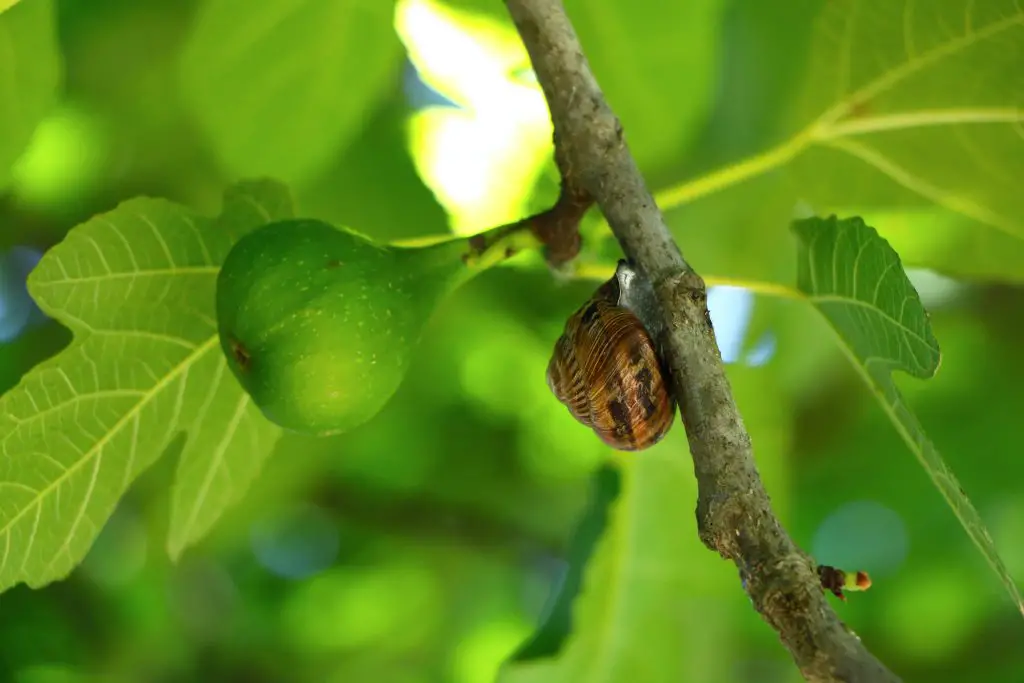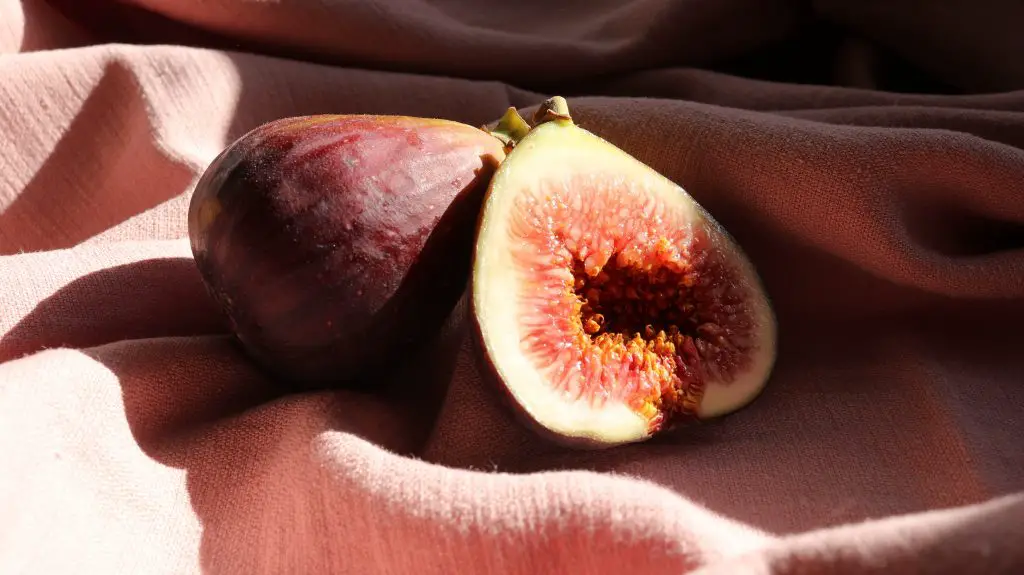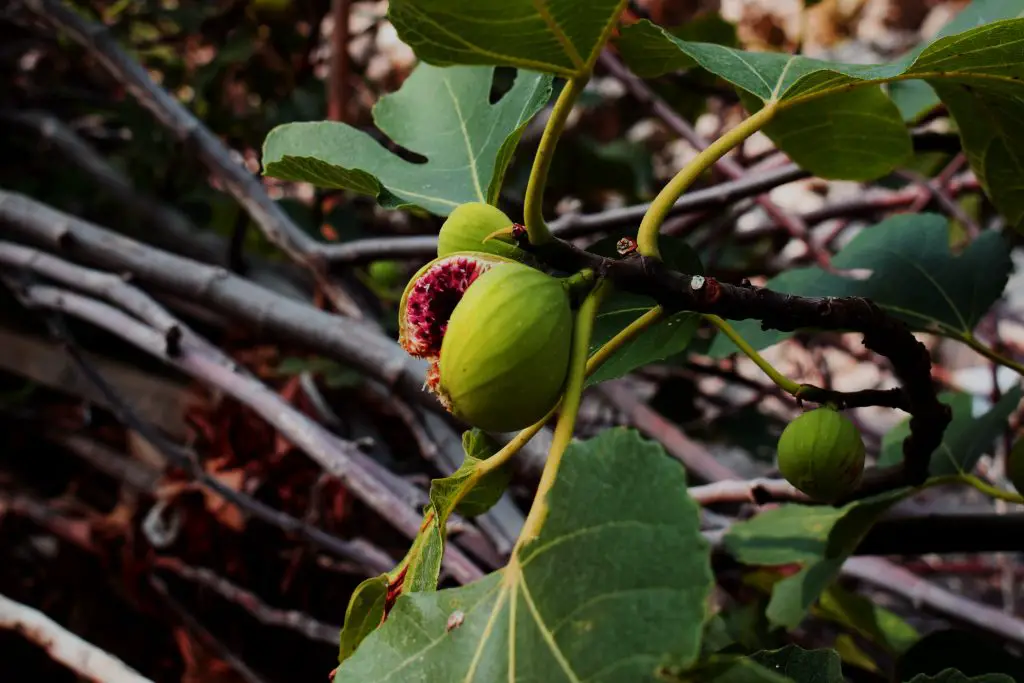How Many Figs Does A Tree Produce? Figs are a delicious treat that can be eaten fresh from the tree or used in cooking. Figs do best in warmer climates, zone 8 or higher, and can grow into the large ornamental trees that are a shady asset in your yard in summer.
The amount of fruit produced by a fig tree is highly dependent upon the growing conditions and age of the tree. According to the study by Sohag University, a 7-year-old fig tree will produce around 55 lbs (25 kg) of figs, however much more mature trees will produce a significantly larger harvest. If grown in pots the yield falls substantially and you can expect 2 to 3 lbs (1.0 to 1.5 kg) per tree according to the study by Chapingo Autonomous University.
Typically it will take between 2 to 3 years for a Fig tree to produce a crop, however, unlike most other fruit trees a Fig will produce two crops in a year once the tree becomes established. The first crop that will appear on a young tree will occur in Autumn on new growth. As the tree becomes more established a second crop will also appear in summer that forms on the previous year’s growth.
Do You Need More Than One Fig Tree To Produce Fruit?
Most productive fig cultivars that are generally available to the home gardeners do not require cross-pollination from a second tree to yield fruit. There are a large number of varieties that produce both purple and white fruit. A description of the 50 most common varieties may be found on the joint Alabama and Auburn University website.
Within this list, there are some varieties that are slightly hardier and can be grown in containers in cooler climates, zones 6 and 7 if the trees are properly insulated from freezing temperatures which may require bring the containers indoors in winter.

How To Grow A Fig Tree
Figs are generally easy to grow and perform best in warm Mediterranean climates which have wet winters and hot summers. However, mature Fig trees are capable of tolerating 15°F (-10°C) for short period.
When Fig trees are planted in the ground they can easily reach a height of 20 ft (3 metres) within a few years. In addition to this, the canopy and root system that is developed can be substantial, therefore it is best, when selecting a location, to ensure it is planted well away from any structures to avoid any problems with root affecting their foundations.
Selecting A Location And Preparing Soil
The location selected should also be a sunny location that gets at least 8 hours of direct sunlight a day, as this will aid with the ripening of fruit. Ideally, Fig trees prefer a rich soil, that contains plenty of nutrients, however, they will tolerate poorer quality soils.
If the soil is of lower quality it is advisable to add compost to the soil and dig it in thoroughly. Additionally, the soil pH should be checked, Figs tolerate soil with a pH ranging from 5.5 to 8.0 but prefer a pH of 6.5 to 7.0.
To measure the pH of the soil it is best to use a pH meter rather than pH strips as it is easier to use and also cheaper to purchase, click here to see the latest price on Amazon. To adjust the pH upward add lime and to adjust it downward add sulfur.

Planting a Fig Tree
The best time to plant Fig Tree is in Late Winter or Early Spring when they are dormant. In cooler areas where late spring frosts are common, it is advisable to delay planting until mid-spring.
When planting the tree create a hole that is larger enough to allow the tree to be placed 3 or 4 inches deeper in the ground than it has previously been at the gardener center. Once the tree is in position backfill the hole with soil firming it down as you go to ensure that there a no air pockets around the rootball.
Water the tree in well and place a thick layer of mulch around the base of the tree that is 2 to 4 inches thick. Ensure the mulch does not come in direct contact with the trunk of the tree to avoid collar root. Lastly, around one-third of the height of the branches should be pruned from the tree as this will encourage the tree to create new shoots and increase in size.
Caring For Fig Trees
To optimize the yield of a Fig tree it needs to be watered regularly during the growing season, particularly in the first season or two when the root system is still developing. After that period the Fig trees can generally tolerate a period of dryness.
Additionally, the Fig tree should be fertilized at the start of the growing season. Figs respond well to the addition of a general-purpose fertilizer and the addition of compost around the base of the tree.
In terms of pruning, Figs can be trained into a bush form or allowed to develop into a larger tree. To create a bush form the tree needs to be cut back to around half its height immediately after planting. This cut forces the tree to produce shoots from the base of the plant. After the first season select, the strongest few shoots and prune them to a length of around 1 ft, and remove all other shoots.
In subsequent years prune around one-third of the previous years’ growth from the tree in winter. Additionally, remove any new suckers that have appeared along with any dead wood.

When growing Figs in a tree form the pruning regime is generally less aggressive with around one-quarter of the grow being needed to be removed year on year. This is done simply to encourage the tree to put on additional growth. As with the bush form any dead and diseased branches should be removed. As the plant matures it may necessary to limit the tree height. This pruning should be done in Summer rather than winter as the extent of regrowth will be significantly less.
Propagating Fig Trees
If you want additional trees the propagation of Figs is relatively simple. Cuttings can be taken in late winter at the same time the tree is being pruned. When selecting material to take a cutting from look for pencil-thick branches and cut them in 6-inch lengths.
As the plant is dormant at this point of the year the cuttings do not need to be planted immediately, they can be stored in a zip lock bag in a refrigerator for a period of time. This is best done if the weather is relatively cool and there remains a high likely hood of a hard frost.
Once the weather has reached the point where it is a little more reliable the cuttings can be potted up. When potting the cutting use is a good-quality potting mix to fill the pot and place several cuttings around the edge of the pot. The reason for this is that cuttings placed next to the side of the pot will root faster as it is warmer.
When you are happy with the position of the cuttings in the pot it should be watered thoroughly and placed in a warm bright location that is not in direct sunlight and is at least 70°F (21°C). If the pot can not be kept above this temperature an empty 2 or 3 litre soda bottle with the bottom removed can be placed over the top of the pot.
Water the pot regularly and leave the cuttings undisturbed for 6 to 8 weeks at this point there should be signs of vigorous growth and a reasonable degree of root development. The cuttings can then be planted onto larger individual pots to continue their development before being planted into their final location.
